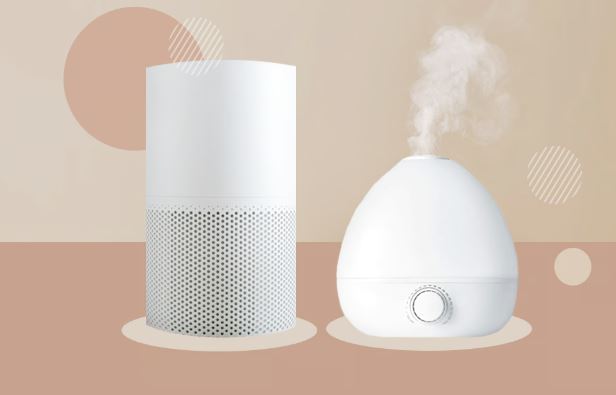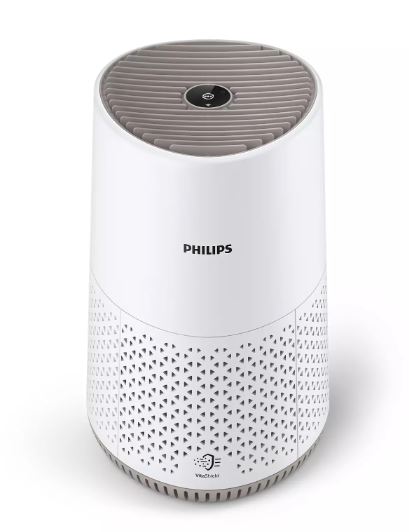In a health-conscious world, the air we breathe in has become an increasingly important consideration for homeowners and health-conscious individuals. With growing concerns over air pollution and a greater awareness of the influence of indoor air quality on overall health on our health, it's no surprise that the air purifier industry is experiencing tremendous growth.
Air purifiers are devices that remove contaminants from the air in a space, improving indoor air quality. They are ideal for those with allergies, asthma, or respiratory concerns as they can drastically decrease the presence of allergens, pollutants, and irritants in the air. Healthy individuals, too can benefit from air purifiers, as they offer peace of mind and an extra layer of protection against airborne illnesses.
This guide will dive deep into the world of air purifiers, examining their advantages, the array of models available, key considerations when selecting the right model, and maximizing your air purifier's potential. By the end, you should have a comprehensive understanding of air purifiers and be able to make an informed decision about whether investing in one is the best option for you and your loved ones.

Unraveling Indoor Air Contaminants and Their Influence on Health
To understand why air purifiers are essential, it's key to comprehending the types of pollutants they target and the possible effects of contact with these pollutants.
Indoor air pollutants can be broadly categorized into the following three categories:
- Particulate Contaminants: This includes solid particles and liquid droplets suspended in the air. Examples include dust, smoke, pollen, pet dander, mold spores, and more. Particulate matter can lead to respiratory complications and trigger allergic reactions.
- Volatile Organic Compounds (VOCs): VOCs are gases emitted from various solids or liquids. Sources of VOCs include aerosol sprays, cleaning products, paints, and pesticides, among others. Exposure to VOCs can lead to eye, nose, throat irritation, headaches, and stomach discomfort.
- Understanding Biological Contaminants: These include bacteria, viruses, mold, and mildew. They can cause a spectrum of health concerns, from allergy symptoms to more serious health risks.
The consequences of exposure on human health can differ considerably. For those suffering from respiratory ailments or weakened immune systems, exposure to indoor air pollutants can lead to serious health issues. Even for healthy people, chronic exposure to certain pollutants can impact respiratory health and overall well-being over time.

How Air Purifiers Work
Air purifiers use a combination of physical and chemical processes to capture and remove pollutants from the air. Understanding the underlying principles employed by purifiers will help you grasp how they work and the variety of options on the market.
Here are the primary mechanisms and innovations used in air purifiers:
- Mechanical Filtration: This is the most widely used approach used in air purifiers. It involves using filters designed to trap airborne particles as air is drawn into the purifier. The filters can be made from various materials, each designed to target specific particle sizes and types. For example:
- Initial Defense: Pre-filters: These are usually the first line of defense, catching larger particles like hair and dust.
- HEPA Filters: The Gold Standard: HEPA filters are exceptionally efficient at trapping tiny particles, including bacteria, viruses, pollen, and dust mites. To be labeled a true HEPA filter, it must trap a minimum of 99.97% of particles down to 0.3 microns in size.
- carbon or charcoal filters: These filters are designed to effectively remove odors, VOCs, and gaseous compounds.
- Ionizers: Charging Ahead: Ionizers use electrical charges to create ions with a negative charge, which attach themselves to particles in the air. The particles become charged, causing them to stick to surfaces or the purifier.
- Ozone's Double-Edged Sword: Some air purifiers use ozone as a potent disinfectant to destroy contaminants. While effective, excessive ozone exposure carries risks so these types of purifiers should be used with moderation and in well-ventilated areas.
- Ultraviolet (UV) Light: UV light can be used to neutralize bacteria, viruses, and mold spores. UV light and filters: a dynamic duo to capture particles first, followed by UV light to neutralize any remaining biological threats.
Selecting the Perfect Purifier
With a plethora of options available, selecting the right air purifier can be a daunting task. It's important to consider several factors to ensure you make the right choice for your particular needs and room size.
Here are some crucial points to consider:
- Sizing Up the Room: Air purifiers are typically designed for specific areas, so it's important to choose a model that can adequately cater to the room size. Most purifiers will list a maximum room coverage or CADR, which indicates the volume of filtered air delivered per minute.
- Type of Contaminants: Identify the types of pollutants you want to target. If you suffer from allergies, look for a purifier with a HEPA filtration system. For odor removal, consider a model with a activated carbon filter. If you're concerned about viral and bacterial threats, a purifier with UV light technology might be best.
- Whisper-quiet Performance: Air purifiers can produce different noise levels, so if you plan to use it in a serene environment, look for models with a sleep mode or quiet setting.
- Maintenance and Costs: Consider the regular maintenance and associated costs of the purifier. HEPA filters generally require replacement every 6 to 12 months, depending on use and environmental factors. Factor in the cost of replacement filters when making your choice.
- Smart Innovations: Many purifiers offer intelligent features like automatic modes, air quality monitoring, and wireless control, allowing remote control and monitoring. These features can improve your purifier's performance and ease of use.
Unlocking the Full Potential of Your Air Purifier
Once you've chosen and set up your air purifier, there are several things you can do to ensure it operates at optimal levels and delivers the optimal results:
- Strategic Positioning: Position your purifier in an open area, away from walls and furniture, to ensure efficient air circulation. Avoid placing it near open windows or doorways as drafts can impact its efficiency.
- Round-the-clock Operation: For the best results, it's recommended to run your purifier continuously. Many models have low-energy settings or automatic modes that adapt to the air quality, so you can maintain fresh air without excessive energy costs.
- Filter Maintenance: Regularly adhere to the recommended filter replacement schedule. Over time, filters become saturated with particles, affecting efficiency. Mark the date of replacement on your calendar so you don't forget.
- Limiting Indoor Pollutants: Alongside using an air purifier, take steps to minimize indoor air pollutants. This could include frequent dusting and vacuuming, opting for natural cleaning solutions, and reducing chemical or aerosol usage.